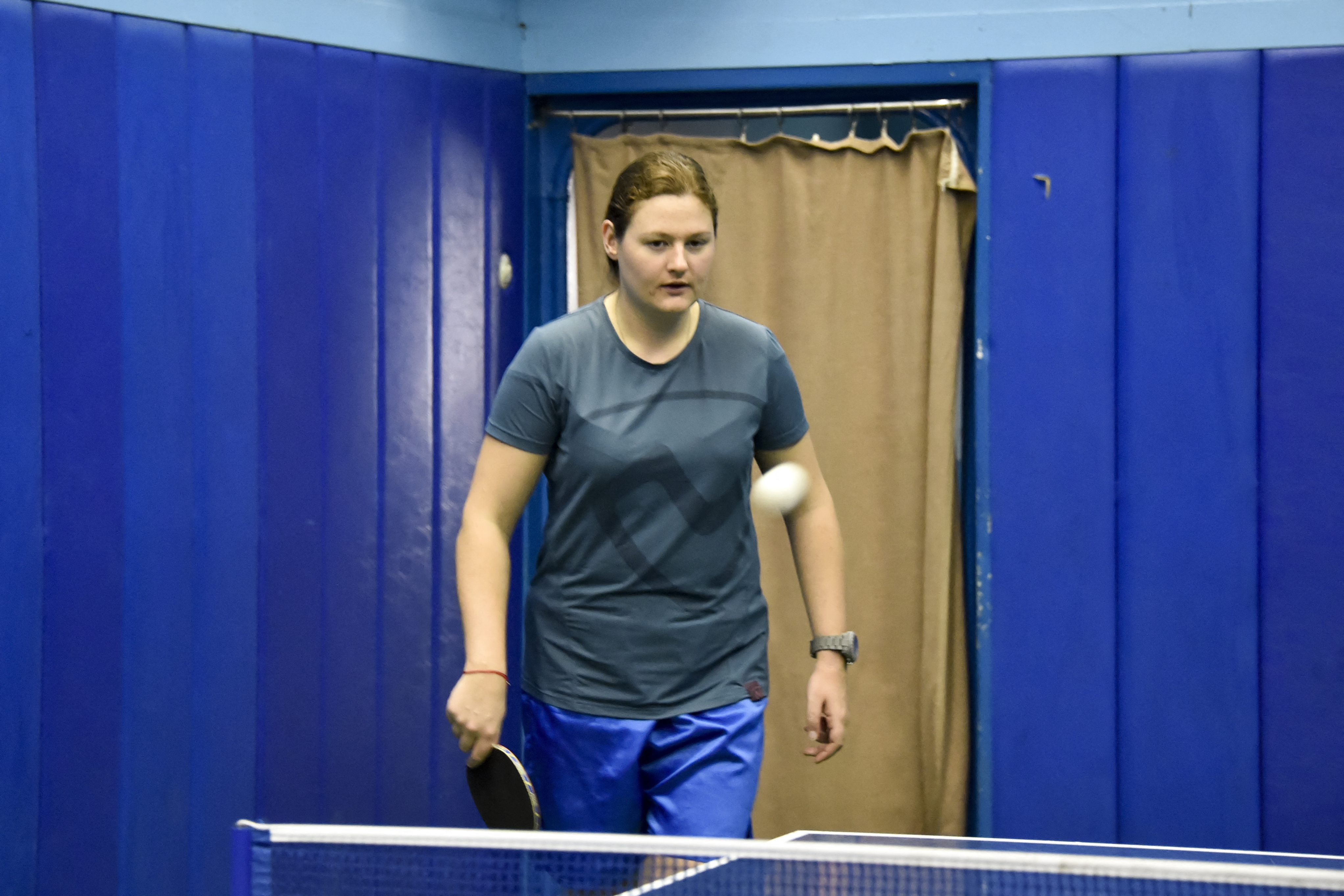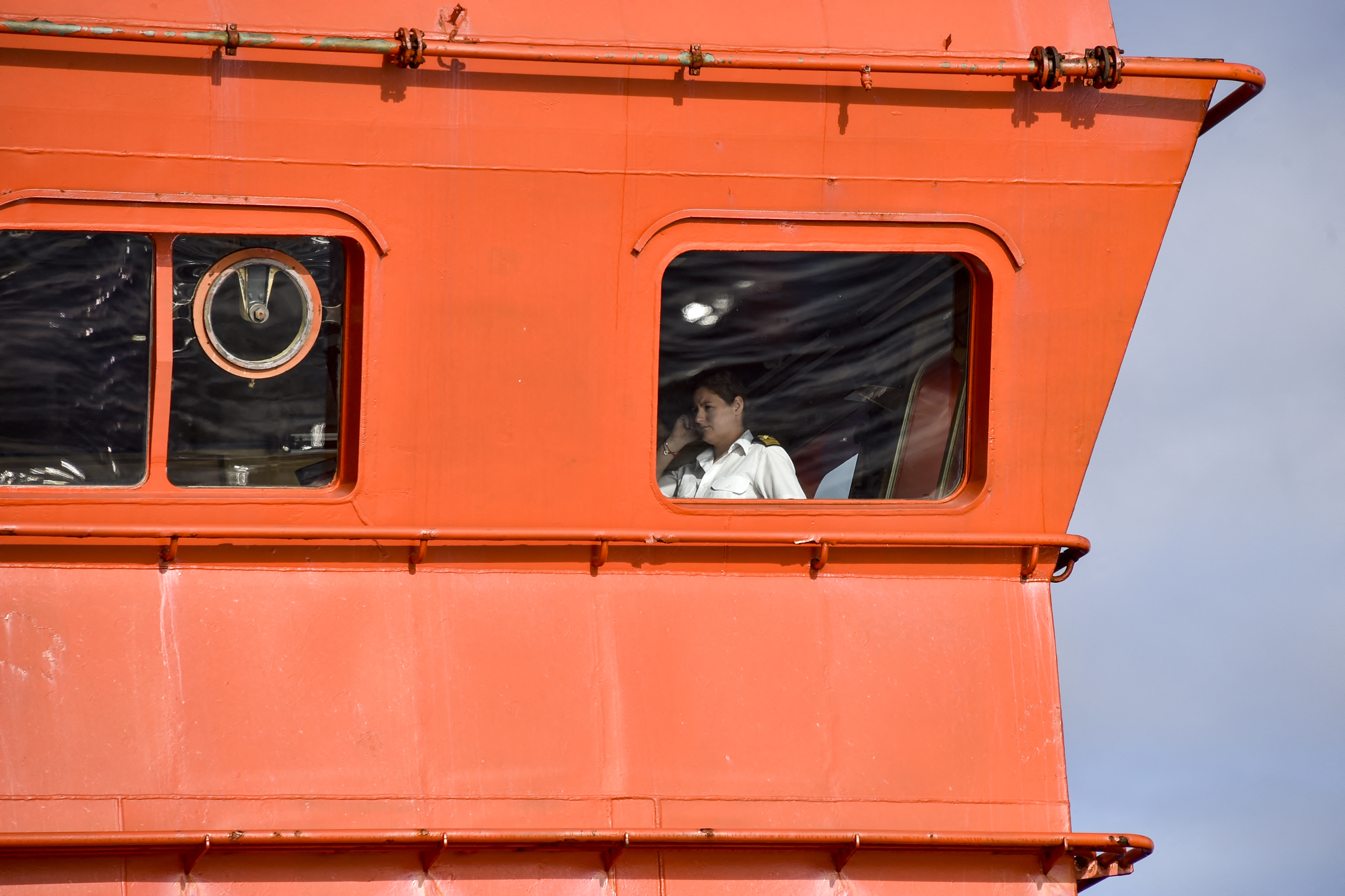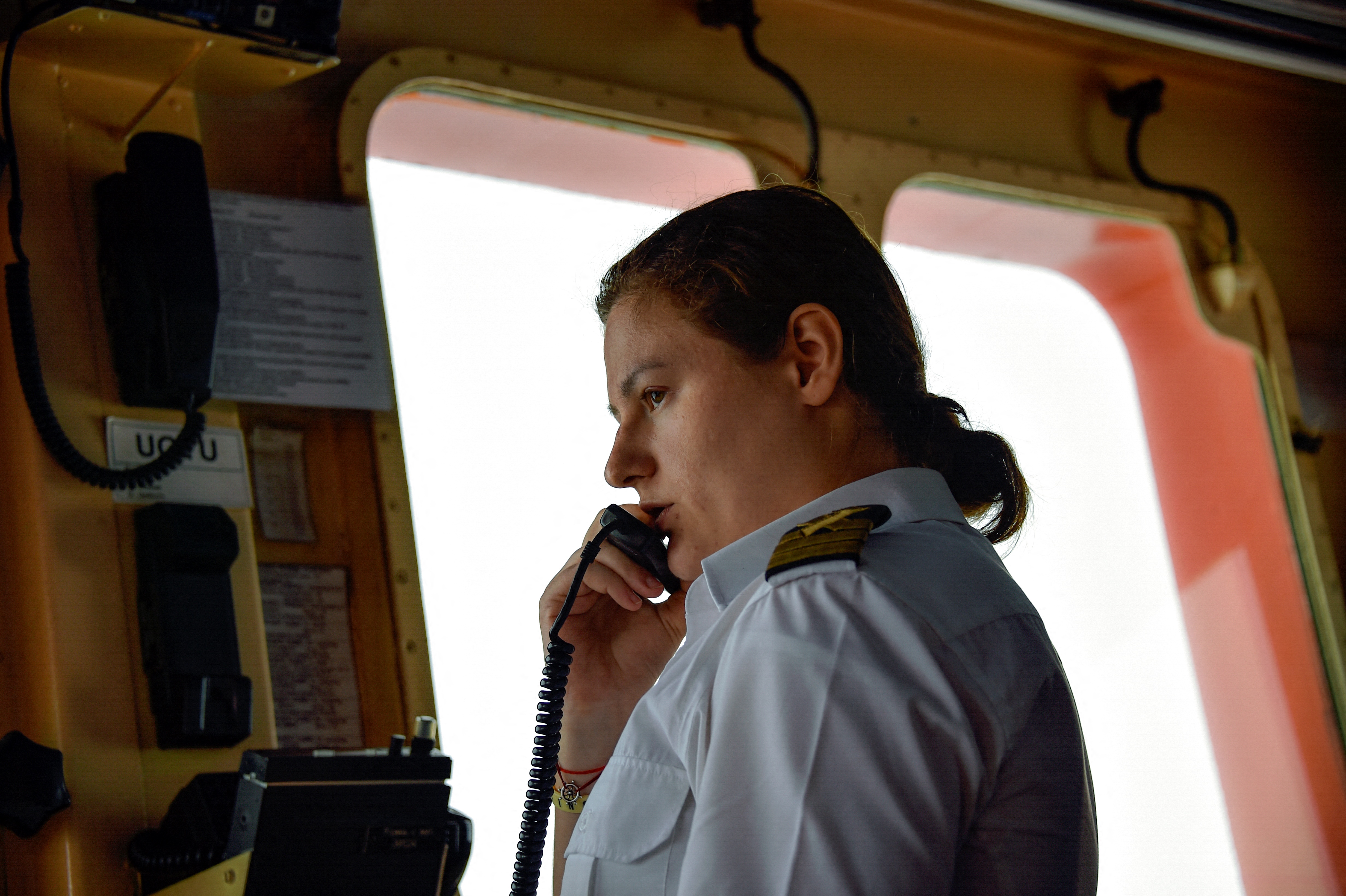Russian woman leads the way on Arctic ship
September 8, 2021 03:43 PM

Peering through her binoculars at icebergs ahead, Diana Kidzhi shouts at the helmsman of a Russian nuclear-powered icebreaker approaching the North Pole: "Ten degrees left!"
At just 27, Kidzhi is a chief mate -- second in command to the captain -- and sets the path the giant vessel will take through the frozen waters of the Arctic Ocean.
Standing on the bridge of the ship, she is surrounded by screens relaying information from dozens of sensors. One tells her the thickness of the ice several kilometres away.
A tiny white spot appears in her binoculars. Kidzhi immediately identifies a polar bear and tells the bridge crew -- all men and many much older -- to slow down so the ship does not disturb its hunting.

They follow her command and the sound of ice cracking beneath the ship begins to fade.
Kidzhi is the most senior woman in Russia's growing nuclear icebreaker fleet -- owned by state atomic energy corporation Rosatom -- which Moscow hopes will secure its supremacy over the Arctic as climate change makes it more navigable.
One of three chief mates aboard the "50 Let Pobedy" ("50 Years of Victory"), Kidzhi is breaking stereotypes in a country where many male-dominated professions are still off limits to women.
There are nine other women on the ship, working in the kitchen, the infirmary and as cleaners.
The rest of the 95-strong crew are men, several of whom said they were not very happy taking orders from a woman.

But Kidzhi is reluctant to talk about sexism, focusing instead on her determination to excel at her job.
- 'Knocking on a closed door' -
During four-hour shifts in the morning and evening, Kidzhi is in charge of the ship's heading as it sails through the Arctic for four months at a time.
Like most of the crew, Kidzhi is from Russia's second city and naval stronghold of Saint Petersburg.
As a child, she dreamed of working at sea.
Initially, she wanted to join the Russian navy. But while Saint Petersburg's Naval Institute was closed to women, another maritime university specialising in commercial shipping opened a course to women students just as she finished school.
"I took it as a sign. What's the point of knocking on a closed door when a path opens up in front of you," she says.
Shortly after graduating, she was invited to join an icebreaker fleet, "immediately falling in love".
In 2018, she joined the "50 Years of Victory" -- her first nuclear-powered ship.
She thrives on the "force you can feel" while operating the ship, which she says is incomparable to a diesel-powered vessel.
She quickly rose through the ranks on the icebreakers and has since sailed around the Arctic dozens of times and made nine voyages to the North Pole.

Kidzhi admits that when she first joined the ship, the crew looked at her with suspicion.
One of her fellow chief mates, 45-year-old Dmitry Nikitin, says she is setting a precedent.
"There are strong opponents of having a woman as part of the fleet. There is a feeling that a woman on a ship is bad luck," he says.
"But we are slowly coming out of this belief."
Sergei Barinov, a 56-year-old deck officer on the icebreaker, says it's Kidzhi's age -- not her gender -- that is exceptional.
He hopes new icebreakers currently being built by Moscow will employ more young Russians.
Rosatomflot told AFP that a woman is serving on another one of its vessels, the "Yamal", but as a deck officer so in a lower-ranked position than Kidzhi.
The chief mate of the "50 Years of Victory" meanwhile is dreaming big. "I aim to become captain one day," Kidzhi says.
When a nuclear icebreaker stops at the North Pole
Smoking a pipe and looking out over the vast, icy Arctic, captain Dmitry Lobusov sounds his ship's horn to signal to passengers they are near their destination: the North Pole.
The Arctic Ocean is too deep to drop anchor, but a thick ice embankment offers a dock for Lobusov's giant vessel -- one among Russia's growing fleet of nuclear-powered icebreakers.
The 160-metre (525-foot) ship called "50 Let Pobedy" ("50 Years of Victory") reduces speed.
"Take a left, we'll stop here," Lobusov tells Diana Kidzhi, his second in command and the most senior woman in Russia's nuclear icebreaker fleet.
Thirty minutes later, the giant red-and-black ship is stopped within short walking distance of Earth's most northerly point.
"Well done," Lobusov says, shaking Kidzhi's hand and disembarking from the deck.
The passengers, including a gaggle of high school students who won places on the trip in a competition, step onto the slippery ice to take photos.
The ice they're standing on -- directly above the ocean floor marking the North Pole -- is shifting in Arctic currents, slowly taking them away from the Pole.
"You always find your own North Pole," says Viktor Boyarsky, a 70-year-old Russian explorer returning to the Arctic.
It has taken the icebreaker three and a half days to traverse the 2,400 kilometres (1,500 miles) to the North Pole from Murmansk, the base of Russia's Northern Fleet.
The journey is only possible in summer, when ice cover is at its lowest. Climate change is making the trip gradually easier year by year.
Still, the 95-strong crew is alert for masses of ice that could impede the ship's progress.
The bridge is in constant contact with the crew controlling the ship's nuclear reactor.
Vladimir Yudin, the ship's chief mechanical engineer, is in charge of its 75,000-horsepower engine, the equivalent of about 75 Formula 1 racecars.
"We have 1,144 settings to manage and just as many sensors that need to be checked regularly," Yudin says.
The engine propels forward the ship's body, which is designed to cut through ice. The front is spoon-shaped, Lobusov explains.
"This allows us to get stuck in ice less often and to better penetrate it," says the 57-year-old, who has spent close to half his life in the Arctic.
The hull is also coated in stainless steel, he says, helping the giant ship glide smoothly and disturbing polar bears in the region as little as possible.






 Mexican claims victory by paying $28 for $28,000 Cartier earrings
Mexican claims victory by paying $28 for $28,000 Cartier earrings Maryam Nawaz can wear uniform!
Maryam Nawaz can wear uniform! Here is all about Madiha Rizvi’s second husband
Here is all about Madiha Rizvi’s second husband Gunmen storm Lucky Cement factory, kill security guard
Gunmen storm Lucky Cement factory, kill security guard Sussanne Khan faces most ‘EMBARRASSING’ moment with beau Arslan Goni
Sussanne Khan faces most ‘EMBARRASSING’ moment with beau Arslan Goni Kashmera acts ‘strange’ when Krushna kisses her in front of paps
Kashmera acts ‘strange’ when Krushna kisses her in front of paps




